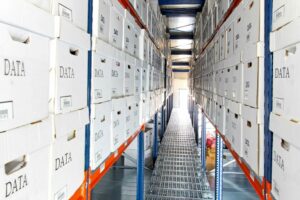In so many words, breakdown means unplanned downtime, either from broken machines, late supplies, personnel issues, or any manner of factory-related issues. The lack of universal industrial data has been another major obstacle slowing the adoption of AI among mainstream manufacturers. Manufacturing data is often localized or specific to a particular industry domain or a company’s operations. Artificial intelligence can monitor and improve production and quality control on factory floors.

A major breakthrough came with Generative Adversarial Networks (GAN) [164], a DL method that is able to learn salient features and synthesize data with high fidelity. The basic concept of GAN is a competition between a generator, which analyzes real data to produce synthetic ones, and a discriminator, what is AI in manufacturing which distinguishes the synthetic data from real ones. The final result is an equilibrium state, resulting in a synthesis of the manufacturing data with high-fidelity. For example, Ref. [165] investigated using synthetic vibration signals to establish the gearbox fault diagnostic model.
AI-Powered digital twin use cases
One of the most important aspects of a successful manufacturing organization is the ability to solve complex problems as they arise. By focusing on collaboration and using AI as a tool capable of enhancing inherent human capabilities, organizations can gain the most benefit. When organizations implement AI with collaboration in mind, it unlocks extraordinary opportunities for innovation.

They store your data pretty cheaply, but when you start using computing resources, it becomes a lot more expensive. You want the ability to scale across different cloud providers or storage solutions, whichever is most cost effective. With any new technology rollout, it makes sense to start with a pilot such as piloting AI on one production line. You create an iteration, work through any issues that come up, and then extend the pilot to different machines or different lines. By scaling the technology incrementally, it can be very cost effective, so it doesn’t break the bank for smaller manufacturers. Don’t expect to build the foundation for implementing AI and see an immediate return.
How Artificial Intelligence is Transforming Finance and Banking
By creating a real-time and predictive model, businesses can monitor suppliers and receive instant alerts in case of any supply chain disruptions. Airbus relies on AI across its operations, including manufacturing, quality checks, and the supply chain. Airbus demonstrates a high level of expertise in asset maintenance, in the manufacturing domain. It helps them monitor critical data from machine sensors, like temperature and pressure, sourced from parameters directly influencing machine performance. Quality assurance is the maintenance of a desired level of quality in a service or product.

Industry has long recognized that utilizing robots to perform these types of tasks frees human operators to more efficiently focus on their inherent natural advantages, namely, those related to cognition, adaptability, ambiguity, and flexibility. Smart manufacturing seeks to increase factory productivity and the efficient utilization of resources in real-time [40]. To achieve these objectives, manufacturing systems need to transform large amounts of data into manufacturing knowledge and useful actions in order to become more responsive to market changes and random disruption events.
2 Opportunities for Artificial Intelligence in Manufacturing.
Workers must be provided with the tools they need to succeed in any job role, including in-depth training in new systems and technologies. On top of the challenges of implementation are the inherent struggles that come with AI in manufacturing. Accurate, real-time data is a cornerstone of the process; without that vital component, the rest of the system falls apart. By reprocessing received data and harnessing its power, manufacturers can generate new ideas, reduce the probability of errors, and build more optimized production programs. Reworking a maintenance program from preventive to predictive not only reduces downtime but can provide overall savings of between 8%-12%, according to the U.S.
Conventionally, simple heuristic dispatching rules are used in production scheduling, such as SPT (shortest process time), COVERT (cost over time), EDD (earliest due date), and FIFO (first in, first out) [42]. However, adhering to a single dispatching rule does not necessarily deliver better performance than dynamically switching dispatching rules according to system states. Inspired by observation, classification problems are formulated by taking the relevant system dynamic variables as inputs, and simple dispatching rules as outputs.
3 Transfer Learning and Data Synthesis.
ML has seen increasing utilization across all levels of the manufacturing system hierarchy. However, compared with the successes of ML in specific applications of process monitoring, optimization, and PHM, utilization is limited at the system level of decision-making [68]. This is primarily attributable to the stochastic and non-linear dynamical nature of manufacturing systems and the complex multi-stage processes and dependencies among vast amounts of heterogeneous data generated therein. Furthermore, although the general advantages of ML lie in its ability to handle NP-complete problems, typical of intelligent optimization problems, the appropriate selection of techniques and algorithms remains challenging.
One of the main problems the industry faces is a need for more historical data upon which to build effective AI models. The current lack of processes for collecting and storing data from individual machines not only makes it impossible to transition to AI in the future but harms the short-term interests of manufacturers as well. The development history of AI in manufacturing has seen tremendous advancement over the past few decades. This early usage focused on automating manual processes, allowing for higher levels of production and efficiency.
Forecast goods demand, anticipate sales and seasonality
Network experts can help de-risk your company’s adoption of AI and other advanced technologies via hands-on technical assistance, as well as connecting you with grants, awards and other funding sources. For areas like AI, where not all MEP Centers have the expertise on staff, they can locate and vet potential third-party service providers. Center staff help make sure the third-party experts brought to you have a track record of implementing successful, impactful solutions and that they are comfortable working with smaller firms. Let the MEP National Network be your resource to help your company move forward faster. According to McKinsey, manufacturing faces tremendous overhead expenses in the semiconductor sector.
- Depending on the type of application and system, these operational steps or processes may or may not be pre-planned which will accordingly drive the requirements of a given AI technique chosen to improve operational efficiencies.
- It is further embracing AI for manufacturing, enhancing efficiency in its Spartanburg plant.
- In case that the machine performance is difficult to measure directly, an artificial health index (HI) is often created from sensor data to represent the machine performance [115].
- The technology can also help with customs clearance, reducing the need for manual paperwork and speeding up the process.
- There’s a synergy that must be developed between human intelligence and the computational abilities of AI technology.
- It comprises algorithms, machine learning, and data analysis to allow robots to perform jobs that previously required human contact.
This framework utilizes force profile features to identify types of snap-fits based on data sets generated via HRC having high variability enabling machine learning, in this case, an SVM classifier was trained. This is an example of where HRC is used for training to develop autonomous robotic operations. In Ref. [84], a system based on natural language is proposed to improve the teaching and robot programming task. The system is built on a semantic network as the basis for a natural language processing system comprised of automatic speech recognition, visual simulation environment, and reasoning. Human voice commands are inputs to the reasoning system which also takes inputs from the natural language processor to search for a reasonable set of robotic actions. In this work, the semantic hierarchical network improves system robustness by preventing incorrect or irrelevant robotic tasks from occurring such as a robot picking up a worktable instead of a workpiece thus yielding faster object referencing.
Edge analytics
The latter is particularly important as it governs how a manufacturing operation is executed jointly by the human and robot and warrants further examination. In this regard, four types of HRC have been defined [75] wherein the degree of collaboration is classified according to how closely humans and robots work together on a specific manufacturing operation comprised of processes and workpieces. Instead, organizations can start by building a simulation or “digital twin” of the manufacturing line and order book.
An example [89], of integrating planning, teaching, and learning into robot functions alleviates the human from these supervisory functions. In this work, a learning approach is developed based on symbolic AI (inductive logic programming, or ILP) for task execution in cognitive robots. ILP enables planning, execution, and learning framework where a set of hypotheses are constructed, updated, or discarded as the robot gains new knowledge in the form of further observations. Specifically, experiential physical learning is combined with an adaptive planning strategy so that feedback is provided to a mobile robot (in lab environment) to improve future task performance thereby robustness. Another key need in advancing HRC is being able to understand and learn the wide range of activities performed by the human operator. This ability involves being able to infer human intentions along with the myriad of complexities that this objective entails.
What are the benefits of AI in manufacturing?
If companies are going to rely on AI-generated insights, there will need to be a human layer that systematically governs data quality and automation results. The manufacturing sector has been notoriously slow to adopt new technologies, and artificial intelligence is no exception. Deep learning models have been out of reach for all but the largest manufacturers, given a shortage of internal specialized AI talent and the difficulty of harnessing complex models to optimize and automate routine tasks.

